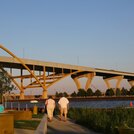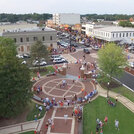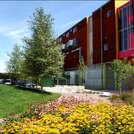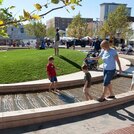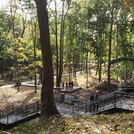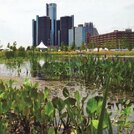Case Study Brief
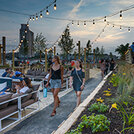
Sandlot
Baltimore, Maryland
“Novel and cost-effective approaches to space activation during the construction phase for long-term development are made possible by landscape architects. Sandlot was created as a pop-up public space during the first phase of a 7-year development on Baltimore's Inner Harbor and features a restaurant serving local food and a 'beach' complete with sand for recreation and relaxation. This unique approach to activating a space during construction generated $677,110 in construction costs, supported a local restaurant, created jobs, and allowed for recreational public access to the Harbor on land that otherwise would have sat vacant for seven years. Designers kept construction costs low for this pop-up site by using pallets for some site furnishings, which can be replaced and upgraded over time as the site transitions into a permanent public park. ”


